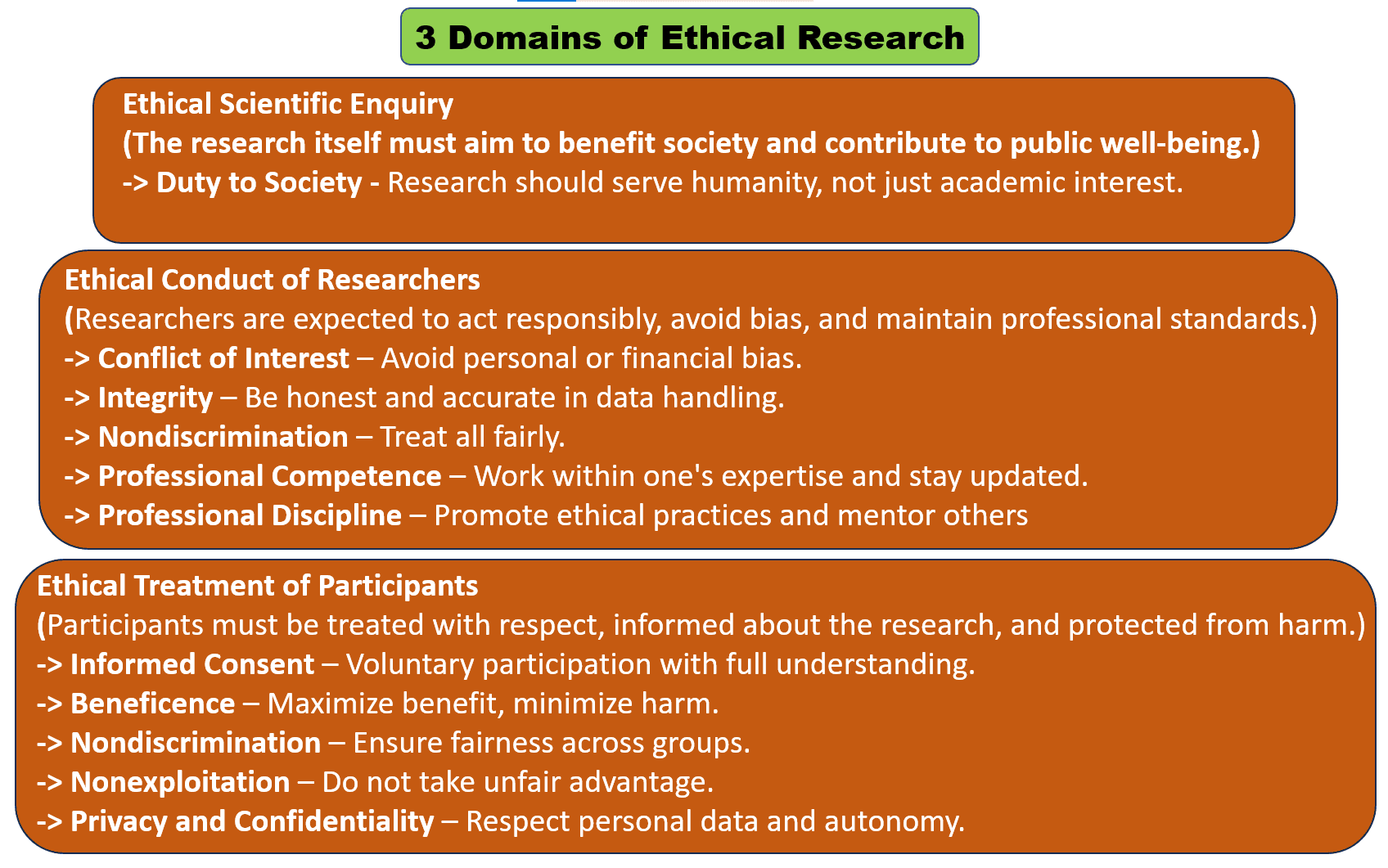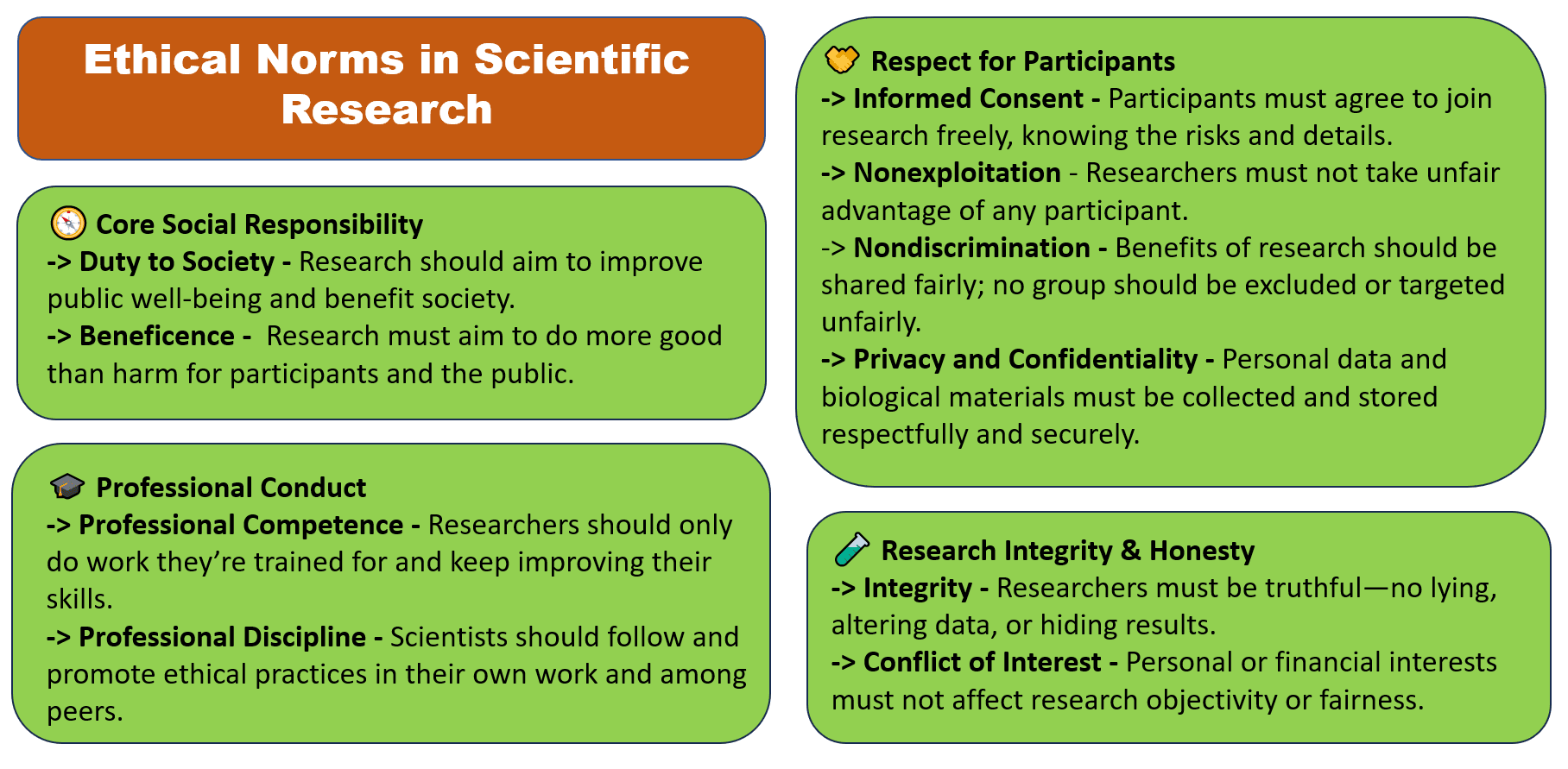Mad scientists creating havoc with their wild inventions– a common sci-fi movie theme we have all come across. How close is this depiction to reality? While overly dramatized, scientific misconduct is actually a major threat to science as well as the general community.
In extreme cases of ethical misconduct, bioterrorism-like incidents have been reported where harmful laboratory agents are intentionally used as a bio-weapon to bring harm. One historic incident, ‘The Rajneeshee Bio-terror Attack’, involved such misuse of a biological agent – Salmonella enterica, which was used to infect salad bars in 10 restaurants in Oregon, USA (1984). Today, the Ebola virus is a major bio-threat and therefore contained in BSL-4 (highly secure lab level) as its virulence is much higher than that of smallpox or anthrax (Gunaratne, 2015).
Dual Use Research of Concern (DURC) – A Double-Edged Sword
A main challenge in research is ensuring the right intention of using a potentially harmful agent for the right purpose of bringing about benefit. This is scientifically termed as the ‘Dual Use Research of Concern’ (DURC), where a research study has an equal potential to benefit or harm. Often in labs, we deal with hazardous chemicals, formulations, or pathogens that need stringent containment. One important example is the engineered strain of influenza virus, which could result in a pandemic if accidentally or intentionally spread (MacIntyre, 2015).
In this regard, the WHO provided a framework of guidelines in 2022 with DURC being the major consideration. These guidelines help to promote a comprehensive biorisk management approach and address risks like lab accidents, misuse of research, or unintended consequences (World Health Organization, 2023).

Beyond Physical Misuse – The Scope and Need of Research Ethics
In addition to physical misuse of bioagents, ethical conduct is essential to ensure data accuracy and credibility. Responsible conduct also extends beyond laboratory work. In scientific writing and publishing, ethical behavior is equally important to prevent the spread of false or biased information to wide audiences. Since research is a collaborative effort involving many contributors and stakeholders, it is also important to protect their rights throughout the research process (Daniel, 2013).
With the increased pace of scientific innovations and developments, especially in the areas of Biotechnology, Biomedical Research, and Genetics with AI (Artificial Intelligence) integration, ethical norms need to be revised and evolved at the same level. Although the baseline ethical principles remain the same, we need data protection rights and the long-term effects of innovations to be considered before launching it to the masses. Moreover, today’s public is more aware and well-connected through several online platforms. They expect a more transparent approach regarding information sharing and scientific publications.
Some other factors adding to the need for ethical conduct are:
-
Protecting Research Credibility
Trust is a product of scientific credibility, which in turn can be assured through clear and open methods of research, proper peer review, and following a definite research protocol. This helps reduce the risk of bias, fraud, or even unintentional mistakes, thereby strengthening the quality and reliability of scientific work, e.g., revealing any conflict of interest and ensuring research credibility.
-
Benefiting the Society
Research ethics also makes sure the research being conducted is purposeful and aimed for a positive impact on society, e.g., Justice and Beneficence are the ethical norms that guide researchers to seek public health and wellbeing solutions.
-
Building Public Confidence
Ethics in research ensure responsibility, care, and respect for all the living and non-living resources. Thus, ethical research establishes a connection of trust and confidence between science and society.
Ethical Misconducts of the Past – Shaping Present Research Ethics
Some of the darkest moments in scientific history have driven the evolution of today’s strict ethical guidelines (Miteu, 2024).
- Tuskegee Syphilis Study (1932–1972)
In this U.S. Public Health Service study, African American men with syphilis were neither informed of their diagnosis nor offered treatment, even after penicillin became available. Treated as mere subjects, they suffered needlessly for decades. Public outrage following the study’s exposure led to the Belmont Report (1979), which established core principles of ethical research: respect, beneficence, and justice.
- Thalidomide Tragedy (1950s–1960s)
Marketed in Europe as a safe drug for morning sickness, Thalidomide caused thousands of severe birth defects due to unrecognized teratogenic effects. The tragedy exposed serious gaps in drug testing and communication about risks. In response, drug regulations were overhauled, demanding rigorous clinical trials and informed consent before a drug could reach the market.
- Stanford Prison Experiment (1971)
Designed to study human behavior under perceived power roles, this psychological experiment quickly spiraled into emotional abuse and mental trauma for participants. The event highlighted the urgent need for mental health protections during research and reinforced the importance of clear ethical oversight in experimental design.
Today, research ethics ensure that not only human subjects but all stakeholders—including researchers and the environment—are protected. From informed chemical handling in labs to responsible waste disposal, every step matters. The image below illustrates some of the main ethical considerations in a research setting:

The 3 Domains and Major Norms of Ethical Research
Owing to the need for ethical conduct throughout the research process, research ethics majorly apply to the 3 areas of the inquiry itself, the researchers, and the research participants (Weinbaum et al., 2019).
These 3 domains with the relevant elements described are given below:

The following figure provides a more comprehensive overview of the main ethical norms in scientific research and their meaning (Weinbaum et al., 2019).

Ethical Conduct in Writing and Publication
Two major ethical concerns in scientific writing are:
-
Plagiarism
It involves using someone else’s ideas, methods, results, or words without proper acknowledgment. While plagiarism is often intentional, it can sometimes happen unintentionally. Plagiarism may be self-plagiarism (using own publication without citing) and duplicate publication (publishing the same to multiple journals, disguising it as new), both of which are serious issues. Plagiarism is of 2 types (Carver et al., 2011). Every year, more papers are retracted because of duplicate publication, damaging both individual reputations and public trust in science.
-
Authorship
It is extremely important to credit major research contributors and list them as authors in a proper sequence to ensure research integrity. Giving authorship to individuals who did not contribute dilutes the recognition of those who worked on the study.
Main Bodies Governing Research Ethics
Several institutions play a key role in ensuring that research is conducted responsibly and ethically (Miteu, 2024). The major one is the Institutional Review Boards (IRB), which are institutional committees that review, approve, and monitor studies involving human subjects. Their main job is to protect participants’ rights and welfare. After careful review of each research design, the IRB may impose sanctions to handle ethical violations by allowing a change of research design or completely halting the research.
In addition to IRBs, several international organizations reinforce ethical standards, such as the World Health Organization (WHO), which enforces ethical guidelines in biosciences and biomedical research and the International Committee of Medical Journal Editors (ICMJE), which provides ethical standards for scientific publishing.
A Concluding Note:
At its core, ethical research is about respecting the knowledge, participants, and the broader community. Ethics is not solely the responsibility of organizations; it begins at home and grows within the community. Parents play a key role by teaching empathy, kindness, and respect for all living beings. As children grow, society further shapes their sense of honesty and responsibility, laying the foundation for ethical behavior in all aspects of life, including research.
In addition, it is not enough to follow regulations; researchers must foster a deeper culture of responsibility, where critical thinking, fairness, and openness are everyday practices. By staying committed to these values, science can continue to meet society’s greatest needs without compromising its integrity.
References:
- Gunaratne, N. D. (2015). The Ebola virus and the threat of bioterrorism. Fletcher F. World Aff., 39, 63.
- MacIntyre, C. R. (2015). Re-thinking the ethics of dual-use research of concern on transmissible pathogens. Environment Systems and Decisions, 35, 129-132.
- World Health Organization. (2023). Fostering the responsible use of the life sciences: Mitigating biorisks and governing dual-use research. In Fostering the responsible use of the life sciences: mitigating biorisks and governing dual-use research.
- Daniel, K. (2013). An assessment of ethical issues in social and scientific research.
- Miteu, G. D. (2024). Ethics in scientific research: a lens into its importance, history, and future. Annals of Medicine and Surgery, 86(5), 2395-2398.
- Weinbaum, C., Landree, E., Blumenthal, M. S., Piquado, T., & Gutierrez, C. I. (2019). Ethics in scientific research. RAND Corporation.
- Carver, J. D., Dellva, B., Emmanuel, P. J., & Parchure, R. (2011). Ethical considerations in scientific writing. Indian Journal of Sexually Transmitted Diseases and AIDS, 32(2), 124-128.
More from the author: Is Limited Light Exposure Causing Sadness and Depression in the Modern World?
Gull-e-lalah is a former intern at Scientia’s Science Writing Internship (cohort 1) and later, working as a team member. She is a scientist, working in the field of Biotechnology and Molecular Pathology, and has a strong passion for science writing, demonstration and teaching.

